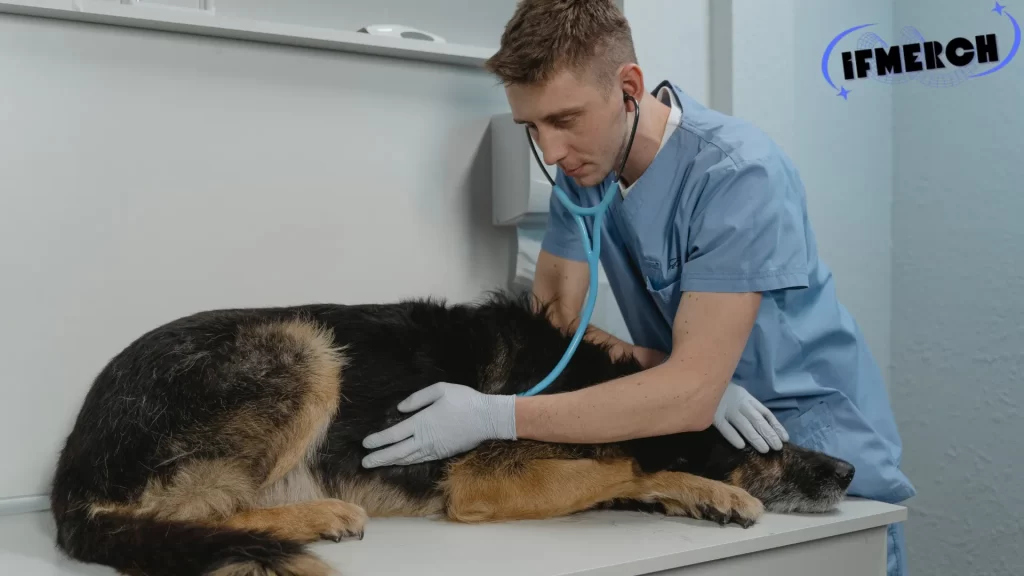Table of Contents
When your pup gets a cut or scrape, you naturally want to help them heal quickly and safely. As a pet owner, you may wonder, can you put Neosporin on a dog? Many reach for Neosporin, a common antibiotic ointment for humans, but is it safe for our canine companions? In this article, we will explore whether Neosporin is a good choice for treating your little doggy’s wounds and what other options you have for keeping your canine friend healthy.
What Is Neosporin?

Neosporin is an over-the-counter antibiotic ointment used to prevent infection in minor cuts, scrapes, and burns on human skin. It contains three active ingredients: neomycin, polymyxin B, and bacitracin. Together, these ingredients stop bacteria from growing, reducing the risk of infection. But just because it works for humans, does that mean you can put Neosporin on a dog? Understanding the needs of canine skin is crucial before applying any treatment.
How Does Neosporin Work?
Neosporin works by stopping bacteria from multiplying in wounds, promoting faster healing. Its antibiotics target various bacteria, preventing infection and encouraging recovery. However, dogs 1 are different from humans, and applying human medications to animals requires caution. While it may seem like a quick fix, it’s always best to understand whether your pup likes it or if there are safer alternatives for their unique needs.
Can You Put Neosporin on a Dog?

Yes, you can put Neosporin on a pup in small amounts, but it should only be used for minor cuts and scrapes. Neosporin is generally safe for animals if applied correctly and the dog doesn’t lick it off. But it’s important to ask your veterinarian before using Neosporin, especially if your little doggy has sensitive skin. Ingestion of Neosporin could lead to upset stomachs, vomiting, or diarrhea in dogs.2. Remember, what’s safe for humans may not always be safe for pups.
Neosporin vs. Polysporin: Which Is Better?
Polysporin is another antibiotic ointment that’s often compared to Neosporin. Polysporin is similar but doesn’t contain neomycin, which some animals may be allergic to. If your pup doesn’t tolerate Neosporin, Polysporin could be a better alternative. However, both products should be used with care, and you should consult a veterinarian before applying either to your doggy’s skin.
When to Avoid Using Neosporin on Your Pup
While Neosporin can help with minor dog wounds, there are times when it’s not the best choice. If the wound is deep, large, or shows signs of infection like swelling or pus, skip the Neosporin and take your pup to the vet. Sensitive pups may react to the ingredients, leading to irritation or allergies. In these cases, it’s better to use a pet-specific alternative recommended by a veterinarian or integrative veterinary expert.
Also Read: How Long Can You Leave Your Dog Alone? Discover the Shocking Truth
How to Safely Apply Neosporin to Your Dog’s Wounds
If you’ve asked, can you put Neosporin on a dog, and your vet gives the go-ahead, here’s how to safely apply it to your pup:
- Clean the Wound: Gently wash the affected area with warm water and dog-safe wipes to remove dirt and bacteria.
- Dry the Area: Pat the wound dry with a clean cloth to prevent trapping moisture under the ointment.
- Apply a Small Amount: Use a small, pea-sized amount of Neosporin on the wound. Too much can cause your pup to lick it off.
- Cover the Wound: If possible, cover the wound with a bandage to stop your pup from licking the ointment.
- Monitor the Wound: If the wound doesn’t improve within a couple of days, visit your vet for further veterinary care.
Potential Risks of Using Neosporin on Your Pup
There are potential risks when using Neosporin on your doggy. If your pup licks the ointment, they may develop stomach issues like nausea or diarrhea. Additionally, some dogs can be allergic to Neosporin’s ingredients, causing irritation or worsening the condition. Always consult with a veterinary expert or professional veterinary care before applying any human ointment to a dog wound, and use a pet method for bandaging the wound to prevent licking.
Also Read: Richard Thomas Health: Surprising Secrets to His Vitality and Longevity
Alternatives to Neosporin for Pups
While can you put Neosporin on a dog is a common question, there are safer, pet-specific alternatives for treating your dog’s wounds. Some of these alternatives include:
- Vetericyn Plus: A pet-safe wound care solution that’s non-toxic for animals and effective on cuts, scrapes, and irritations.
- Bag Balm: Originally used for cow udders, Bag Balm is a popular option for healing cracked paws and minor wounds in pups.
- Aquaphor: Although not an antibiotic, Aquaphor helps soothe and protect dry, cracked skin and minor wounds.
- Dog-Specific Antibiotic Ointments: Many pet stores offer antibiotic ointments made for dogs, which are better suited for your pup’s unique skin.
When to Visit a Veterinarian
If you’re unsure about your dog’s wound, it’s best to consult professional veterinary care for guidance. Can you put Neosporin on a dog? While it can help with minor cuts, seeing a vet is crucial if:
- The wound is deep, bleeding heavily, or not healing.
- Your pup shows signs of infection, like redness or swelling.
- Your pup doesn’t stop licking or scratching the wound, making it worse.
- Neosporin causes a rash or irritation after application.
Veterinary care can guide you on the best treatment for your pup, including pet-specific alternatives to Neosporin.
Also Read: Discover If Neosporin Is Safe for Your Dog’s Wounds
What to Do If Your Pup Doesn’t Respond Well to Neosporin
If your pup doesn’t react well to Neosporin, you might consider Polysporin or antifungal chlorhexidine dog treatments as alternative solutions. Always speak to your veterinarian before switching to any new treatments, and monitor your pup closely for adverse reactions.
FAQs
Q: Can I use Neosporin on my dog’s ears or eyes?
A: No, Neosporin shouldn’t be used on your dog’s ears or eyes, as the ingredients can cause irritation. Always consult a veterinarian before applying anything near these sensitive areas.
A: Is it safe for my dog to lick Neosporin?
A: It’s not recommended. Ingesting Neosporin can upset your pup’s stomach, so try to cover the wound or distract your pup after applying the ointment.
Q: What should I do if my pup licks off the Neosporin?
A: If your pup licks off a small amount, they might experience mild stomach upset. However, if they ingest a large quantity, contact your vet for advice.
Q: Are there better alternatives to Neosporin for dogs?
A: Yes, pet-specific alternatives like Vetericyn and Bag Balm are designed for treating wounds on pups and may be safer than Neosporin.
Q: Should I consult my vet before using Neosporin on my dog?
A: Yes, it’s always best to check with your veterinarian before using any human medication, including Neosporin, on your pup.



